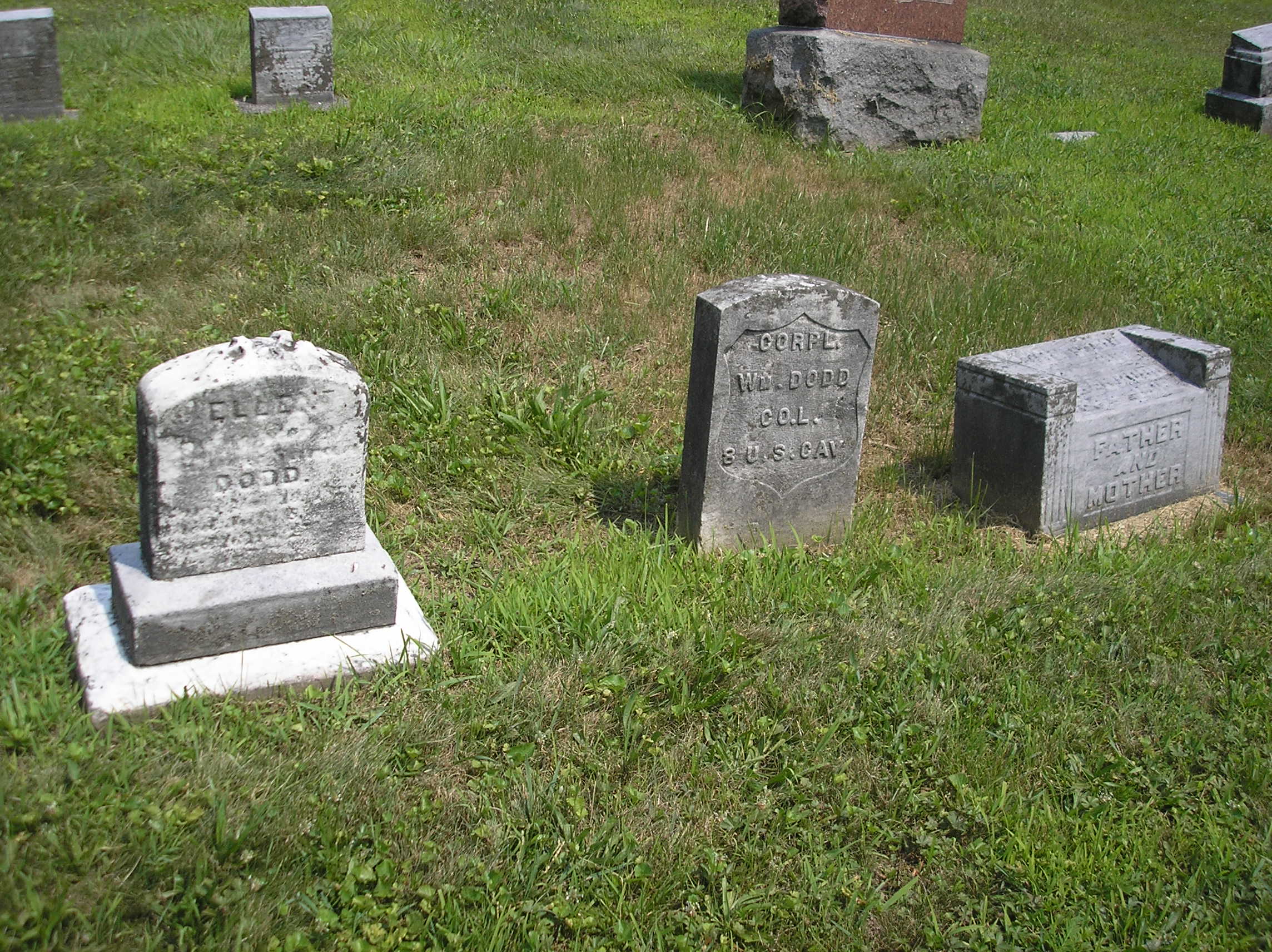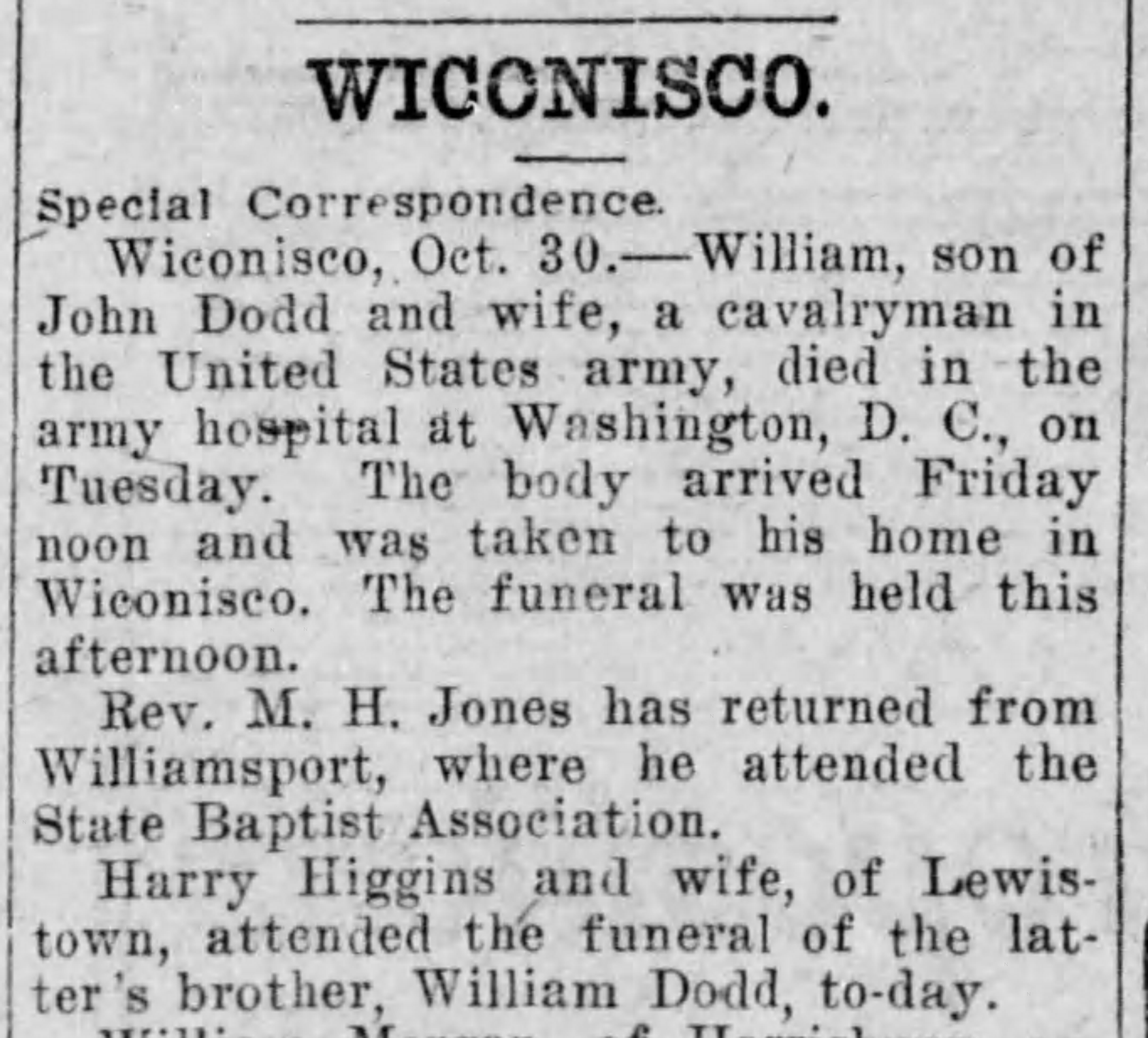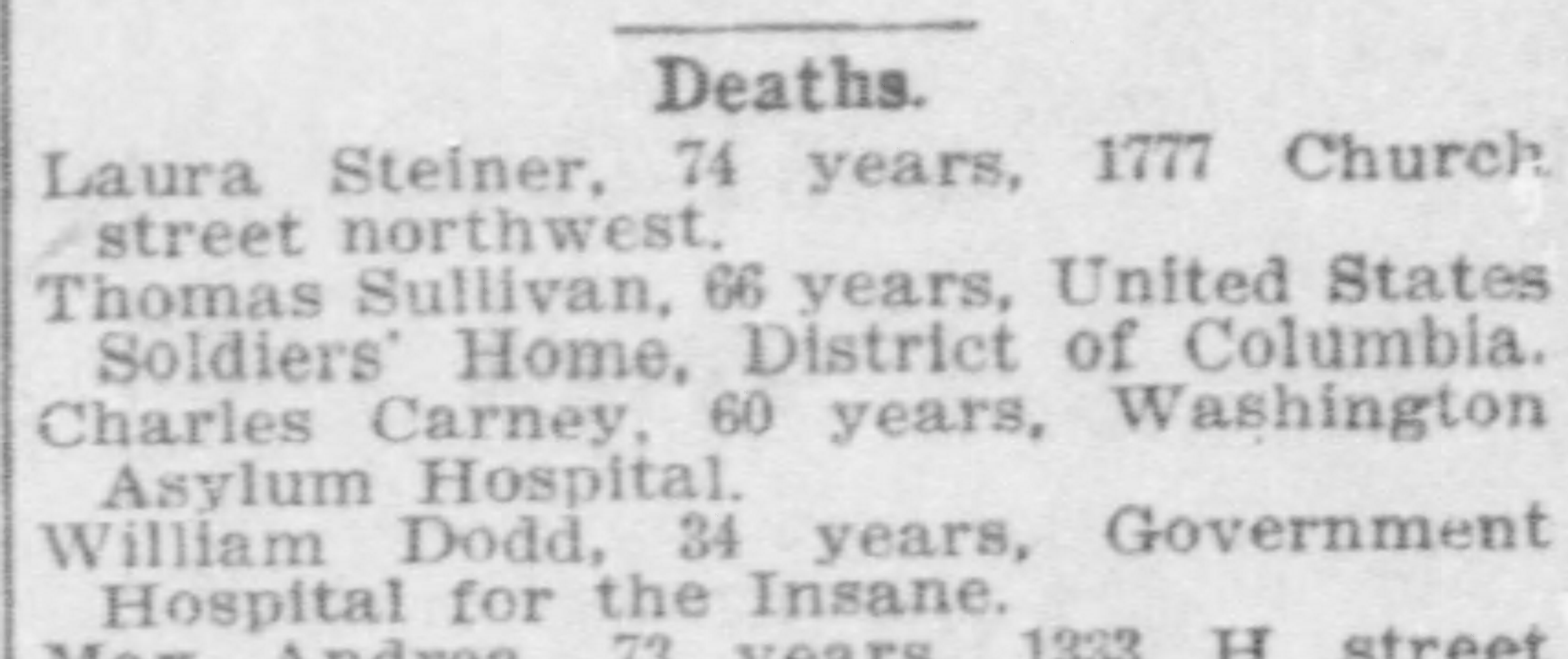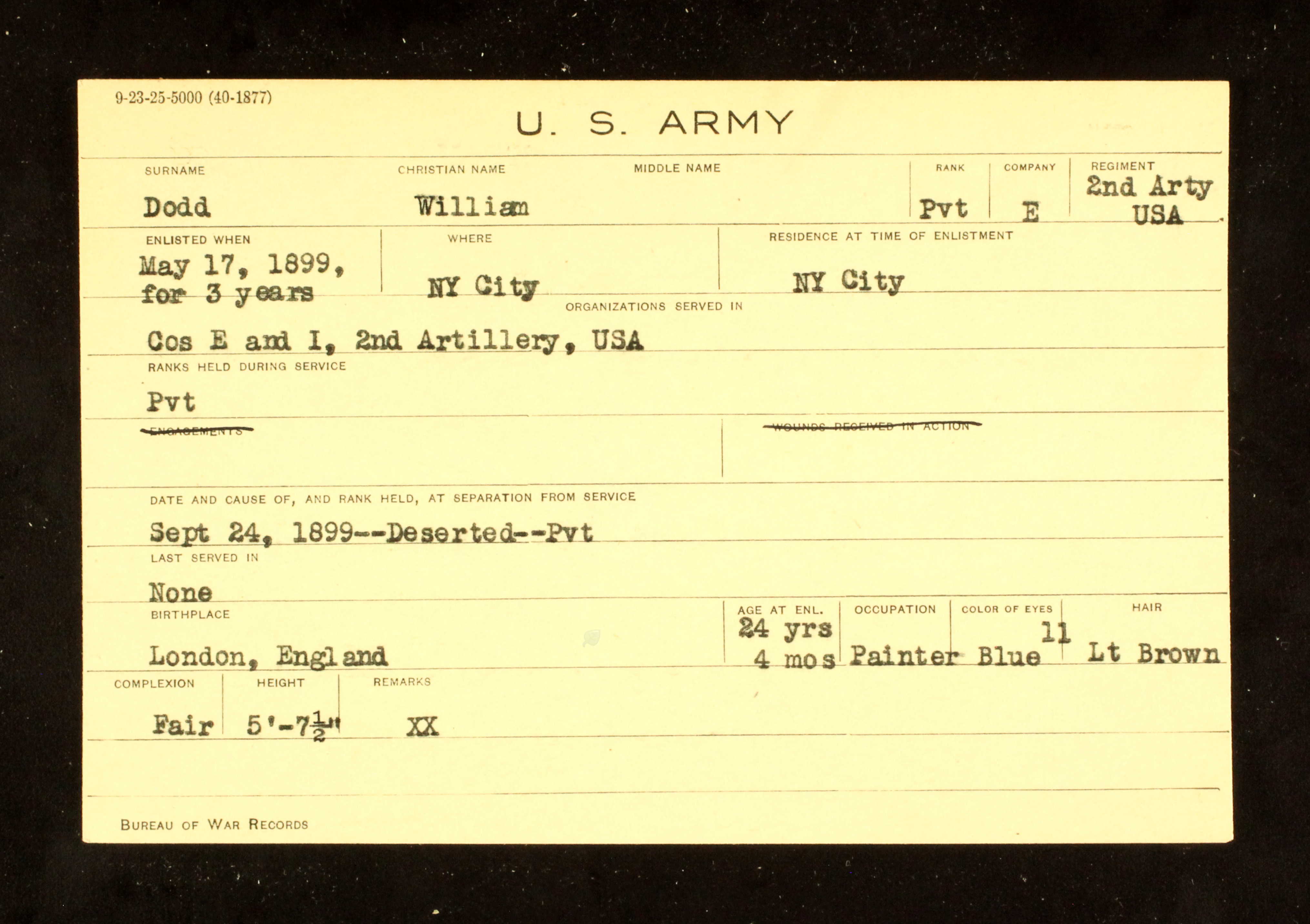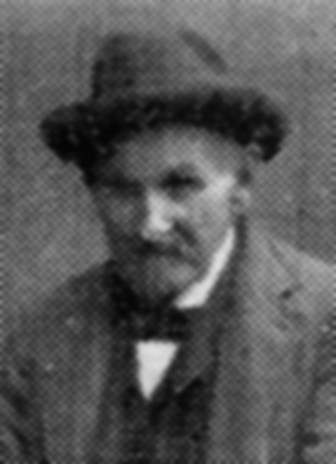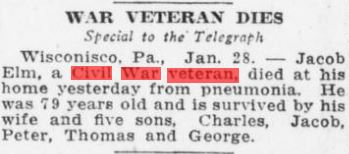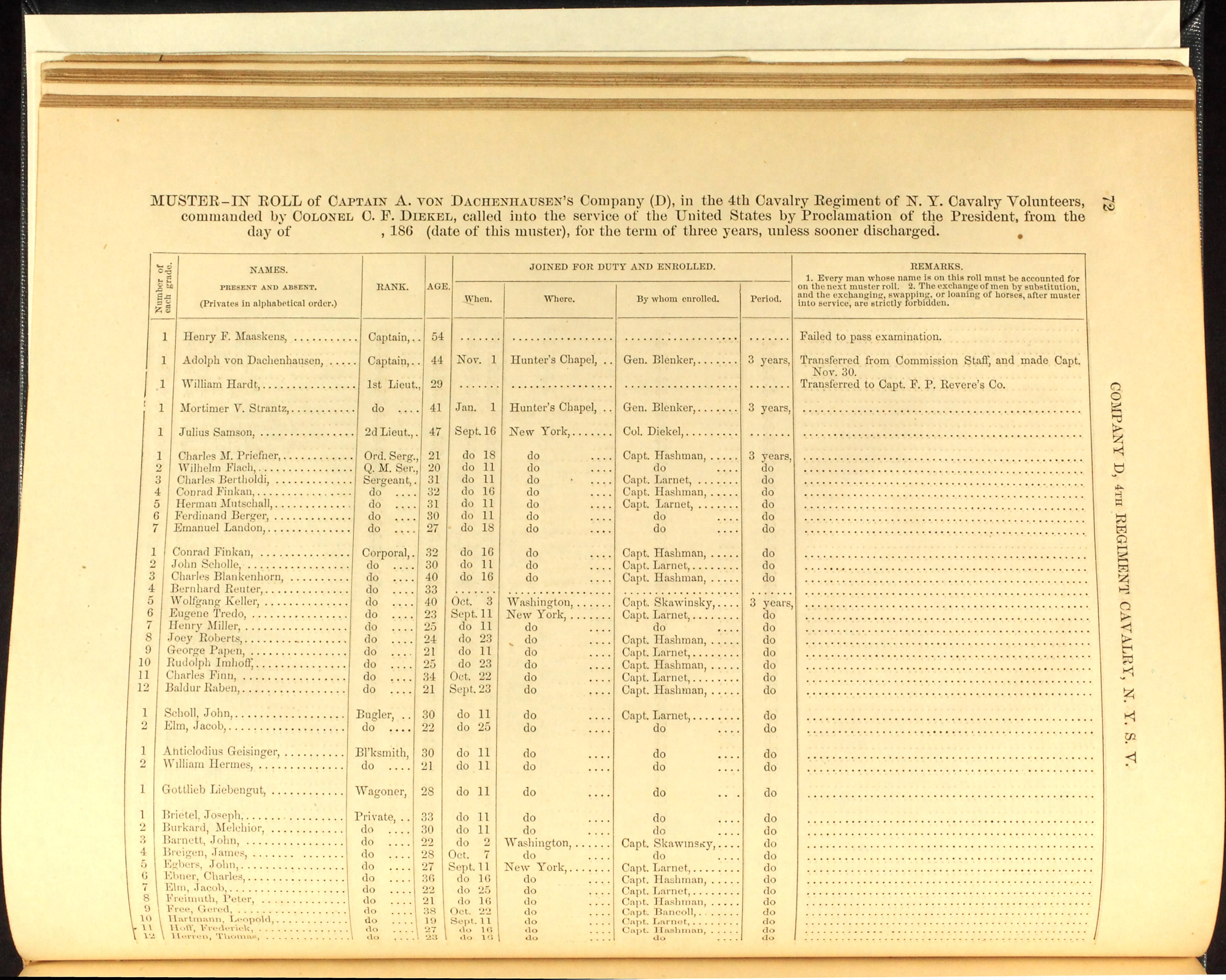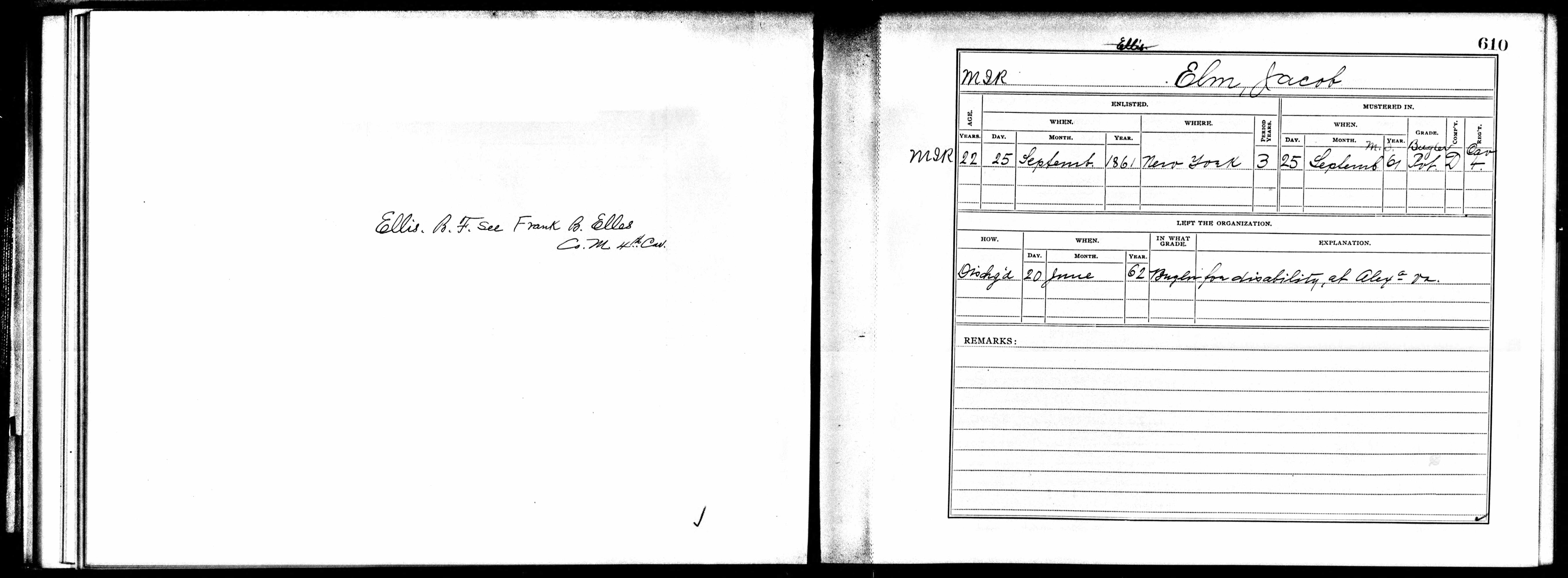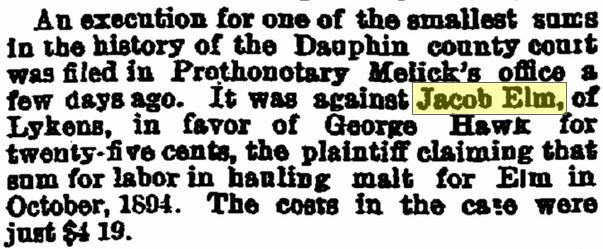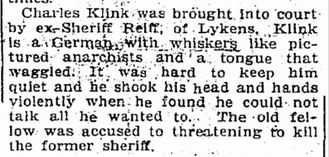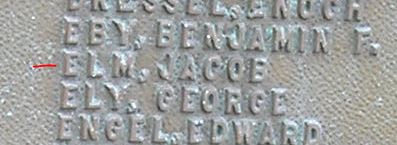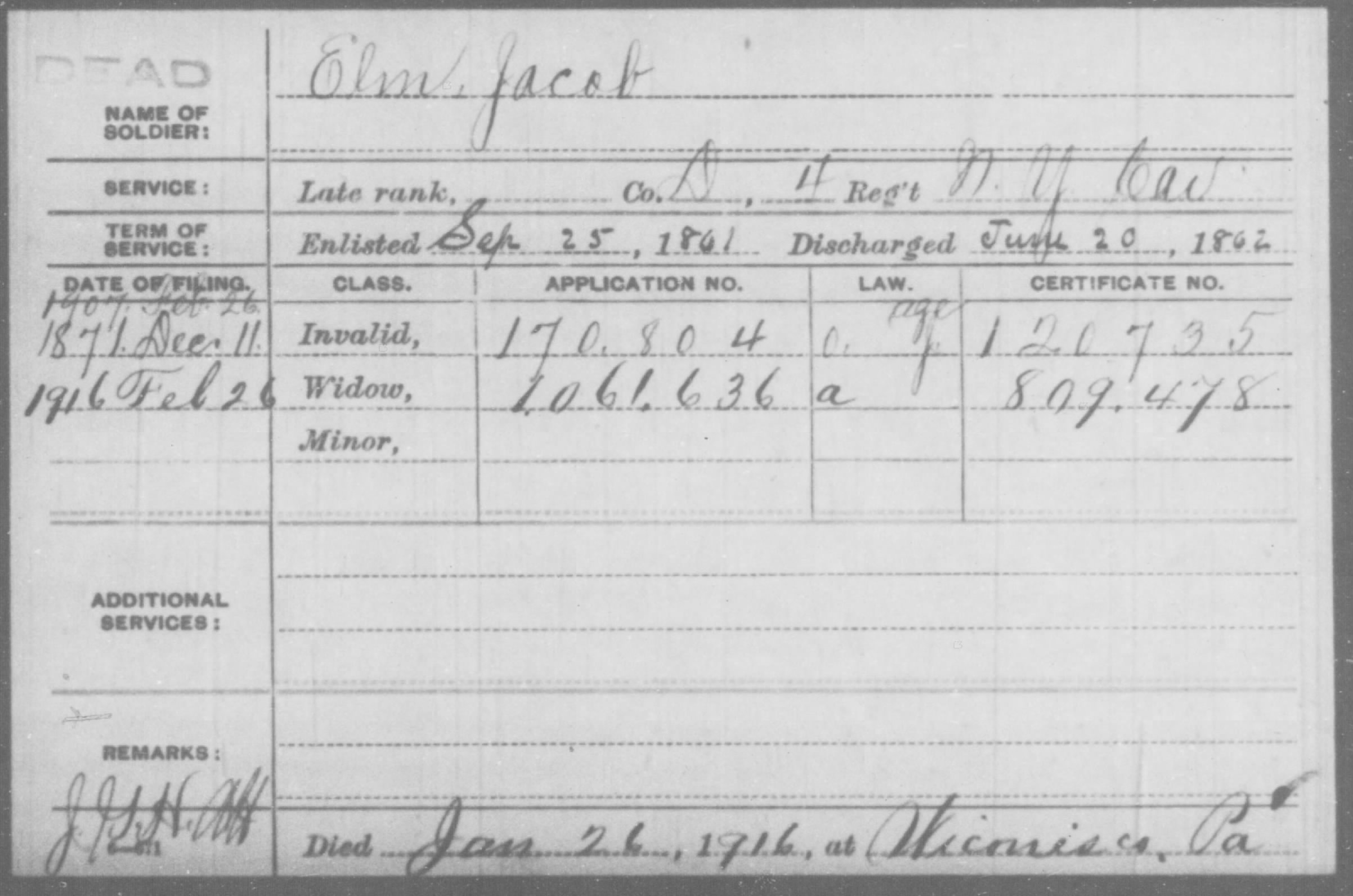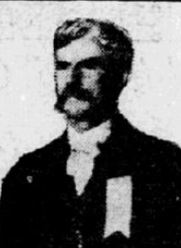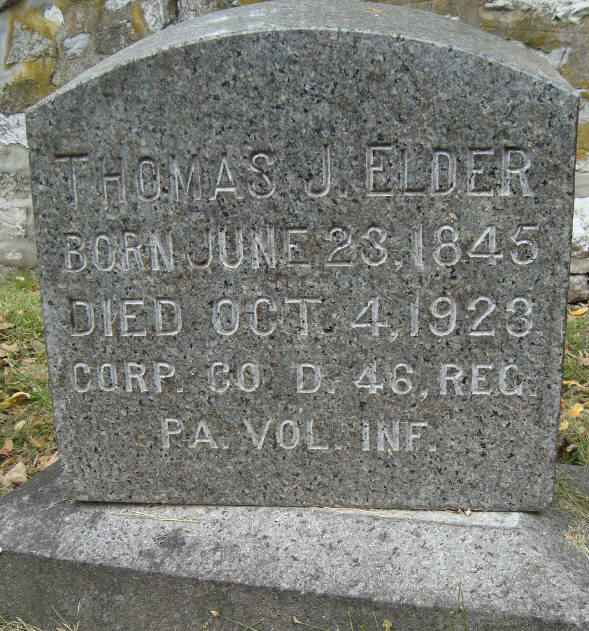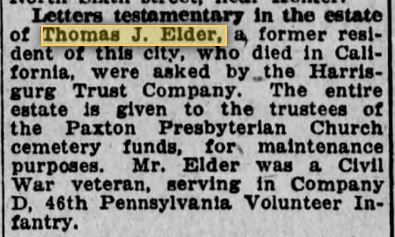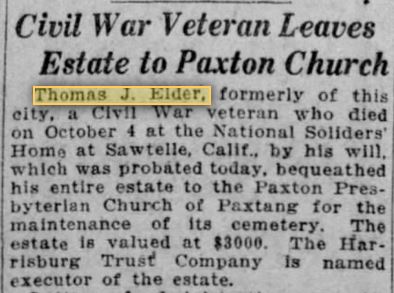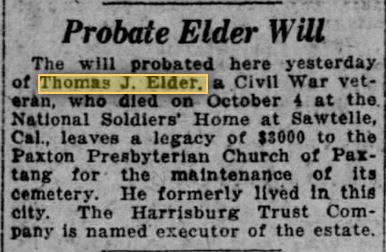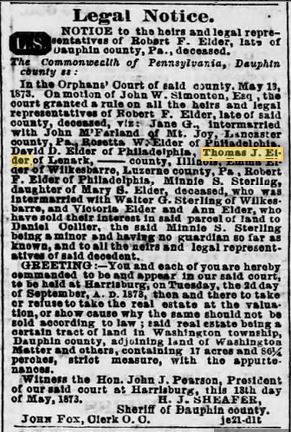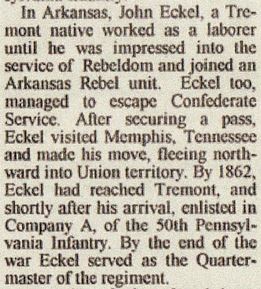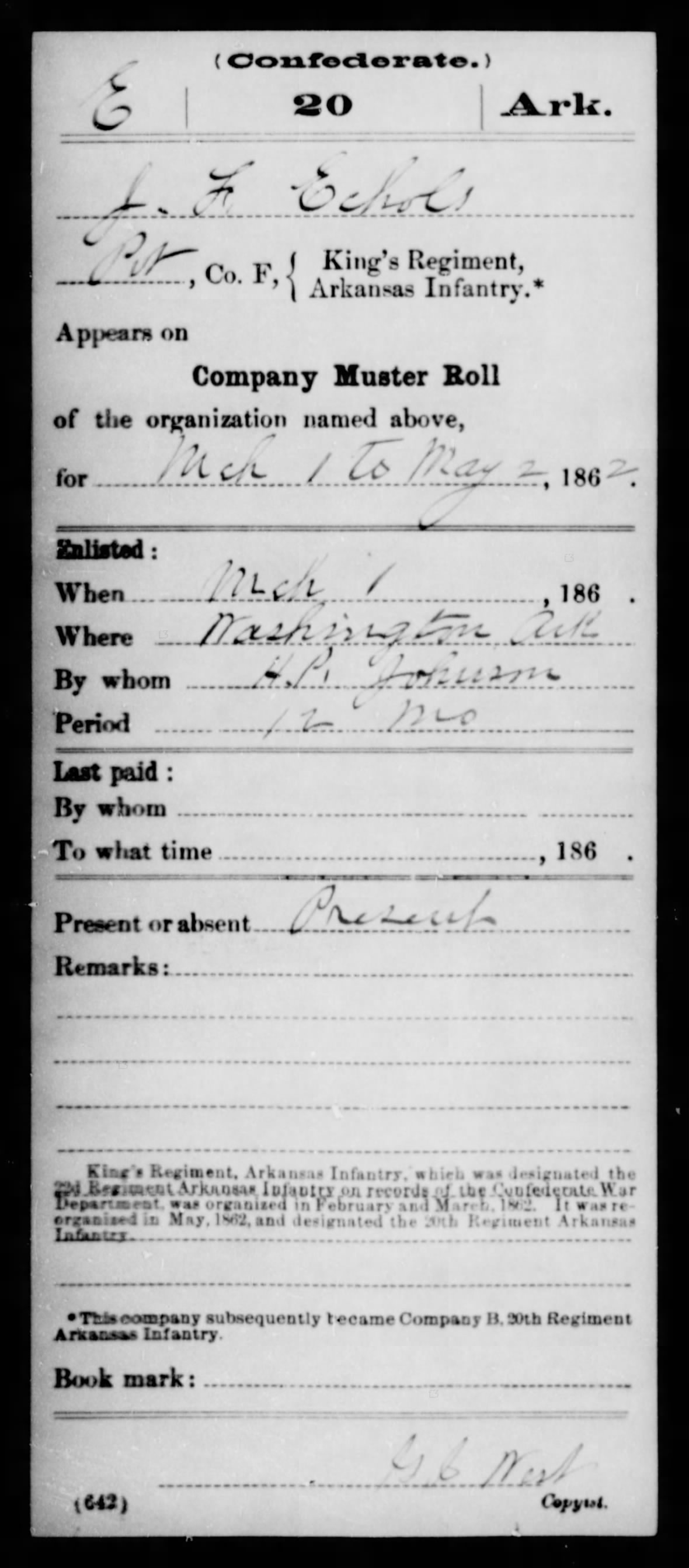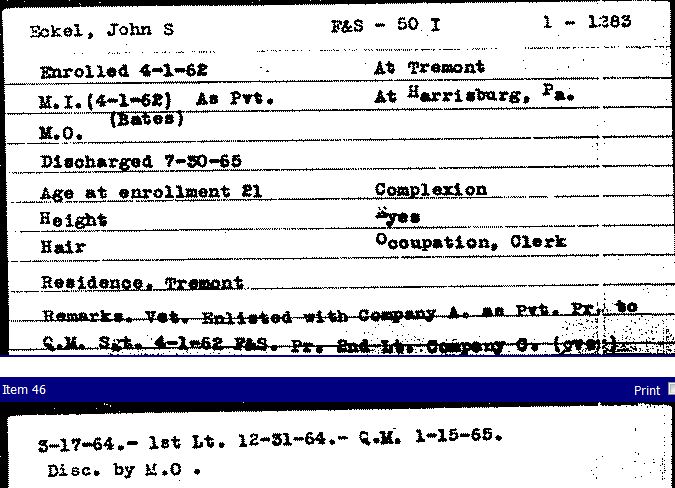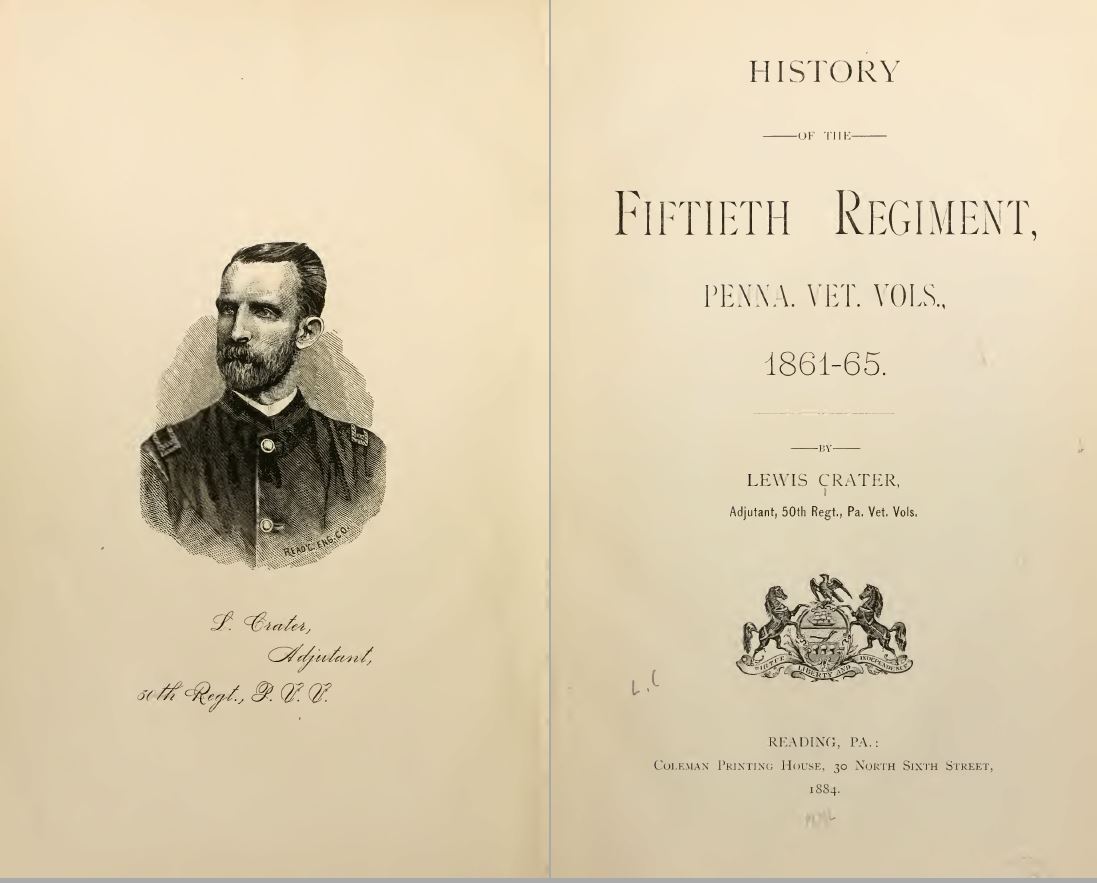William Dodd Mystery Solved – Not Civil War
Posted By Norman Gasbarro on November 6, 2015
In a post on 14 October 2015, several questions were raised about William Dodd who is buried at Calvary United Methodist Church, Wiconisco, Dauphin County. The questions mainly centered around whether he was a Civil War soldier. As a result of information provided by Deb Rudy, a Lykens Valley area researcher and contributor to this blog, it can be definitively stated that William Dodd did serve in the U.S. Cavalry, as noted on the grave marker, but did not serve in the Civil War; his name was included in the Civil War list in error!
Part of the basis of this conclusion can be found in two brief obituaries located and provided by Deb Rudy:
WICONISCO
Special Correspondence
Wiconisco, 30 October 1909 — William Dodd, son of John Dodd and wife, a cavalryman in the United States Army, died in the army hospital at Washington, D.C., on Tuesday. The body arrived Friday noon and was taken to his home in Wiconisco. The funeral was held this afternoon….
Harry Higgins and wife, Lewistown, attended the funeral of the latter’s brother, William Dodd, today. [Harrisburg Daily Independent, 30 October 1909].
Deaths….
William Dodd, 34 years, Government Hospital for the Insane. [The Washington Times, 29 October 1909].
Family information that can be used for further research includes the name of Williams’s father [John Dodd], that William was approximately 34 years old at the time of his death [born about 1875], and that William had a sister who was married to Harry Higgins [they attended the funeral and were living in Lewistown, Mifflin County, Pennsylvania, in 1909].
The above extract is from the 1910 Census of Derry Township, Mifflin County, Pennsylvania (found on Ancestry.com). It shows a Harry V. Higgins, age 30, born in Pennsylvania, a clerk at a steel plant, and married 6 years to Emma Higgins, who was 29 years old, born in England (as were her parents), and emigrating to the United States in 1889. They had one child – Vincent W. Higgins, who was 3 years old at the time of the census. Also in the household were Joe D. Higgins, age 20, brother of Harry, and Howard Buffington, age 20, a boarder. The two 20-year-olds were working as laborers in a steel plant.
Turning next to the 1910 Census of Wiconisco Township, Dauphin County (found on Ancestry.com), the above family unit was located. John Dodd [the father of William Dodd] a 68 year old coal miner, was head of the family. He was born in England and emigrated to the United States about 1888. He was married to Sarah Dodd, age 65, who was also born in England and emigrated in 1888. Sarah was married to John for 43 years and had 12 children with him, six of whom were still alive in 1910. It can be presumed that since their son William died in 1909, that he was one of the 6 who were no longer living. Also in the household was a younger son, Andrew J. Dodd, age 22, also born in England and emigrating to the United States about 1888. Andrew was working as a laborer in a coal mine in 1910.
The final available* U.S. census is from Wiconisco Township in 1900, and is shown above. John Dodd, age 58, a coal miner, born in England about January 1842, is head of the family. Sarah Dodd, age 55, the wife, was born in England about June 1844, and was married to John for about 34 years. She had 12 children, 7 of whom were still alive. Presumably, William Dodd was one of those still alive, since he did not die until 1909. However, William Dodd is not in their household in 1900. The children in the household, all of whom were born in England, are: Sarah A. Dodd, age 20, born about December 1879; Emma Dodd, age 19, born about May 1881 [in 1910 married to Harry Higgins, and living in Mifflin County]; Hiram Dodd, age 17, born about February 1883; and Andrew Dodd, age 13, born about May 1887. [*Note: The family entered the United States just prior to the 1890 Census, which was entirely lost by fire; censuses after 1910 have not been examined, because William died in 1909, and those censuses would only be useful in following through on other members of the family].
At this point in the research, ship lists for entry into the United States have not been consulted, but it should not be too difficult to locate what appears to at least be two separate ship entries: John Dodd, who claimed to enter in 1887, and the rest of the family who entered in 1888. From the U.S. Census of 1900, it can be speculated that Sarah was pregnant with Andrew at the time her husband traveled to the United States, that Andrew was the last child born to this couple, and that after Andrew was born, Sarah brought her other children with her in 1888 – to meet up with her husband John who arrived in 1887. Presumably, William Dodd, who would have been about 13 years old, accompanied his mother and younger siblings in 1888. And, since Sarah had 7 living children in 1900, there are still 2 missing children – who may or may not have come to the United States with the family. A search of the English censuses, which has not been done for this blog post, may produce the names and birth information on the other children.
William Dodd does not appear with the family in Wiconisco in 1900. So, where was he in 1900?
Deb Rudy also provided the above information leading to the identification of a William Dodd in a 1900 Census for Grant District, Marion County, West Virginia. It appears to be the same person, i.e., single and living as a boarder, the age of 25 (birth date approximately February 1875), born in England (as were both his parents), emigration to the United States in 1888, occupation of coal miner – and there is an absence of any other person anywhere in the United States who closely fits the description. Of course, the census does indicate why this William Dodd moved away from his family to West Virginia or how long he had been there when the census was taken.
Deb Rudy also located a military record for a William Dodd from England who enlisted in New York during the Spanish-American War – and then deserted. Was this the same person researched here?
On 17 May 1899, at New York City, a William Dodd enlisted as a Private in the 2nd United States Artillery, Companies E and I. At the time he was 24 years-4 months old (consistent with a February 1875 birth), was born in London England, was about 5 foot, 7.5 inches tall, had light brown hair, a fair complexion and blue eyes. His occupation was painter. He had no prior military service. The record shows that he deserted on 24 September 1899. The above card is a transcription made for New York records and is not the original register sheet.
In checking the original records for this William Dodd, the above extracts are taken from the U.S. Army Registers of Enlistments of May 1899. The information in the original is consistent with the New York State transcription. What is not consistent is the fact that this William Dodd, who deserted, was in an artillery regiment, not a cavalry regiment as stated on his grave marker. Therefore, an additional record search, post 1899, is required to see if William Dodd shows up again in a cavalry regiment.
The above record extract, also from the U.S. Army Register of Enlistments (available on Ancestry.com), shows that on 2 December 1904, a William Dodd, who was 29 years, 9 months old, registered at Pottsville, Schuylkill County, in the 8th United States Cavalry, Company E, and served until his discharge on 7 December 1907 at Fort Russell, Wyoming, at the expiration of his term. The age at enlistment in years and months is consistent with the February 1875 birth date given in the West Virginia Census of 1900 (above).
Finally, the above U.S. Army Register of Enlistment extract from December 1907, shows that William Dodd re-enlisted at Fort Russell, Wyoming, in the 8th United States Cavalry, Company E, but was discharged for disability at Washington, D.C., on 27 September 1909 – approximately one month before his death – at the same place!
It is always best to get as much confirming information as is available, but it appears that the research now on William Dodd is headed in the right direction, thanks to Deb Rudy for her contribution! There are still gaps in the story. Additional information is sought from blog readers who might be able to provide some additional family information, pictures, and any other interesting information about this veteran who is buried in Wiconisco. Please attach comments to this post or send by e-mail.
 ;
;
